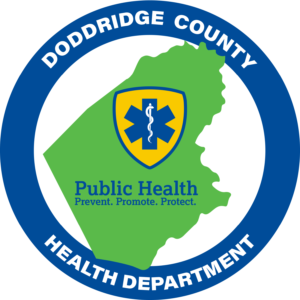What is Multiple Sclerosis (MS)?
Multiple Sclerosis (MS) is an unpredictable, often disabling disease of the central nervous system that disrupts the flow of information within the brain and between the brain and body.
While MS is not hereditary, having a first-degree relative such as a parent or sibling with MS does significantly increase an individual’s risk of developing the disease. Studies have shown that there is a higher prevalence of certain genes in populations with higher rates of MS. Common genetic factors have also been found in some families where there is more than one person with MS. Some researchers theorize that MS develops because a person is born with a genetic predisposition to react to some environmental agent that, upon exposure, triggers an immune-mediated response. Sophisticated new techniques for identifying genes are helping to answer questions about the role of genes in the development of MS. Understanding what causes MS will speed the process of finding more effective ways to treat it and, ultimately, cure it, or even prevent it from occurring in the first place.
The evidence is also growing that smoking plays an important role in MS. Studies have shown that smoking increases a person’s risk of developing MS and is associated with more severe disease and more rapid disease progression. Fortunately, the evidence also suggests that stopping smoking, whether before or after the onset of MS is associated with a slower progression of disability.
No single test can diagnose MS. The medical history, neurologic exam and lab tests help physicians rule out other diseases and confirm the MS diagnosis. Strategies to diagnosis MS include a careful medical history, neurological exam and various tests to include magnetic resonance imaging (MRI), evoked potentials (EP) and spinal fluid analysis.
Managing MS is an ongoing process beginning with the very first symptoms and continuing throughout the disease course. Knowing what to look for, where to find it, and how to work effectively with your doctor and other health professionals is essential to your health, wellness and quality of life.
Types of Multiple Sclerosis (MS)
~Relapsing-remitting MS (RRMS) RRMS is the most common disease course characterized by clearly defined attacks of worsening neurologic function. These attacks, also called relapses, flare-ups or exacerbations are followed by partial or complete recovery periods (remissions) during which symptoms improve partially or completely and there is no apparent progression of disease. Approximately 85% of people with MS are initially diagnoses with relapsing-remitting MS.
~Primary-progressive multiple sclerosis (PPMS) is characterized by steady worsening of neurologic functioning, without any distinct relapses (also called attacks or exacerbations) or periods of remission. A person’s rate of progression may vary over time — with occasional plateaus or temporary improvement — but the progression is continuous.
~The name for secondary-progressive multiple sclerosis (SPMS) comes from the fact that it follows after the relapsing-remitting disease course (RRMS). Of the 85 percent of people who are initially diagnosed with RRMS, most will eventually transition to SPMS, which means that after a period of time in which they experience relapses and remissions, the disease will begin to progress more steadily (although not necessarily more quickly), with or without any relapses (also called attacks or exacerbations).
~Progressive-relapsing multiple sclerosis (PRMS) is the least common of the four disease courses, occurring in approximately five percent of people with MS. Like those with primary-progressive MS (PPMS), people with PRMS experience steadily worsening neurologic function disease progression from the very beginning, in addition to occasional relapses like those experienced by people with relapsing-remitting MS.
Because PRMS is progressive from onset, it may be initially diagnosed as PPMS, and then subsequently changed to PRMS when a relapse occurs. Although this disease course is progressive from the outset, each person’s symptoms and rate of progression will be different.
Exercise is also helpful in managing many MS symptoms. A study published by researchers at the University of Utah in 1996 was the first to demonstrate the benefits of exercise for people with MS. Those patients who participated in an aerobic exercise program benefited from:
*better cardiovascular fitness
*improved strength
*better bladder and bowel function
*less fatigue and depression
*a more positive attitude
*increased participation in social activities
Additional studies have confirmed the benefits of exercise, including improvement in cognitive function and mood enhancement.
Inactivity in people with or without MS can result in numerous risk factors associated with coronary heart disease. In addition, it can lead to weakness of muscles, decreased bone density with an increased risk of fracture, and shallow, inefficient breathing.
Exercise doesn’t have to be a rigorous cardiovascular workout to provide benefits. Physical activity in general is beneficial and can include a variety of things most people can do in the comfort of their home or community. Physical activity includes but is not limited to:
An exercise program needs to fit the capabilities and limitations of the individual. It may need to be adjusted as changes occur in MS symptoms. Any person with MS who is initiating a new exercise program should also consult with a physician before starting.
While additional research is being conducted on diets in MS, the following recommendations are based on what is known today:
1. Maintain a balanced diet: A well-balanced diet helps maintain overall health and may prevent a wide range of diseases. In addition, diet may have an effect on the MS disease process, including direct effects on the immune system, indirect effects through modulation of the gut flora, and effects on components of the central nervous system.
2. Achieve a healthy weight: Research findings point to obesity as a possible risk factor for developing MS. The incidence of MS appears to be increasing worldwide at the same time that caloric intake and being overweight or obese are increasing. In recent studies, obesity and body size at age 18–20 were associated with an increased risk of MS, as was higher Body Mass Index (BMI) at age 7–13. It has also been shown that obesity can affect disability progression and health-related quality of life.
3. Reduce sodium intake: Some recent evidence points to sodium, which is a primary component of salt, as potential factor in MS disease activity. In an observational study, people who consumed a moderate or high amount of sodium had a higher rate of relapses and a greater risk of developing a new lesion on MRI than people who consumed a low amount of sodium.
4. Monitor vitamin D levels: Several studies have suggested that low intake and low blood levels of vitamin D play a role in the risk of MS and of disease progression. Vitamin D supplementation is currently being evaluated in randomized, controlled clinical trials in order to determine whether there is a causal relationship between vitamin D and MS disease activity — or some other non-influential association — and whether the potential benefits of vitamin D supplementation outweigh any risks for people with MS. In the meantime, vitamin D can be obtained from oily fish (including salmon, mackerel, sardines, herring and trout), egg yolks and cod liver oil, as well as dairy products, cereals and orange juice that have been fortified with vitamin D. Determining whether a person is a candidate for vitamin D supplementation depends on his or her blood level of vitamin D, which can be obtained with a simple blood test. The normal range of 25-hydroxyvitamin D is 30–100 ng/mL (75–250 nmol/L); a vitamin D level in the 20–30 ng/ML range is considered low; a vitamin D level below 20 ng/mL is considered deficient.
5. Consider polyunsaturated fatty acids (PUFAs): The potential role of PUFAs in slowing disease activity has been studied with mixed results. As with vitamin D supplementation, carefully controlled trials are necessary to identify potential benefits and risks.
6. Use caution with probiotics: Probiotics (bacteria and other microorganisms that may provide health benefits) may eventually prove to be a potential treatment for MS. However, studies of the safety and effectiveness of probiotics in MS are very limited. Since some probiotics may stimulate the immune system, both the potential benefits and risks must be studied.
Other Diet Tips:
• Limit sugar and processed foods
• Increase fruits and vegetables
• Choose lean sources of protein (including chicken, turkey, soy products, fish, beans)
• Choose healthy fats (polyunsaturated fats from nuts, seeds, vegetable oils and oily fish)
• Consume adequate fiber and fluids
The National Multiple Sclerosis Society provides access to accurate, current, and comprehensive information to people with MS and those who care about them.
For more information about Multiple Sclerosis (MS) click on links below:









